New York designer Aimée Wilder explores Eudaimonia, a Greek word commonly translated as happiness or “human flourishing,” in her collection of wallpapers, fabrics, rug and accessories. From the effects of the moon on the evolution of the natural world to the impact of astrological phenomenon, Wilder captures the many ways surroundings can influence our psychological state, and contribute to overall wellness.
“This collection was born through finding balance and stability in my own life,” says Wilder. “Once I learned that living to work instead of working to live, along with incorporating methods like Vedic meditation and natural healing into my daily routine, was able to create a peaceful environment around me, I hoped to thoughtfully reflect that feeling in each design.”
Eudaimonia consists of two wallpaper and fabric patterns, Pyramide du Soleil and Earthlight, with an additional rug pattern, Eclipse. All three patterns reflect the natural balance between the Earth, the Sun, and the Moon, evoking the beauty of cosmic balance. With this collection, Wilder introduces a new construction for commercial fabrics, tested for 50,000 double rubs and available with a range of protective coatings including anti-microbial and stain coating. In addition, for the first time, Wilder will offer wallpaper printed in Brooklyn, New York, where she resides and operates her design studio.
Pyramide du Soleil is a subtly optical pattern manifesting the ancient Sun’s shadow and its balance with the earth, Pyramide du Soleil features pyramid and Sun as they represent the illusive quality of time. It integrates pyramids and circles with sophisticated diagonals and horizontal stripes, inspired by the continuous synchronicity that exists between the earth and the Moon.
Earthlight focuses on the waxing and waning cycles of the Moon’s phases in an eye-catching, geometric pattern across wallpaper and fabric design. Named for the scientific phenomenon in which sunlight reflected from Earth’s surface indirectly illuminates the otherwise dark side of the Moon, Earthlight is sure to brighten any space.
Eclipse showcases the inversion of colors in this rug design suggests the effects of an Eclipse, a harbinger of change in the daily life that acts as a guiding hand when questioning one’s path. With a boldness that invokes a new take on a vintage aesthetic, the Eclipse rug comes in a range of warm tones that will add a welcoming touch to a room.
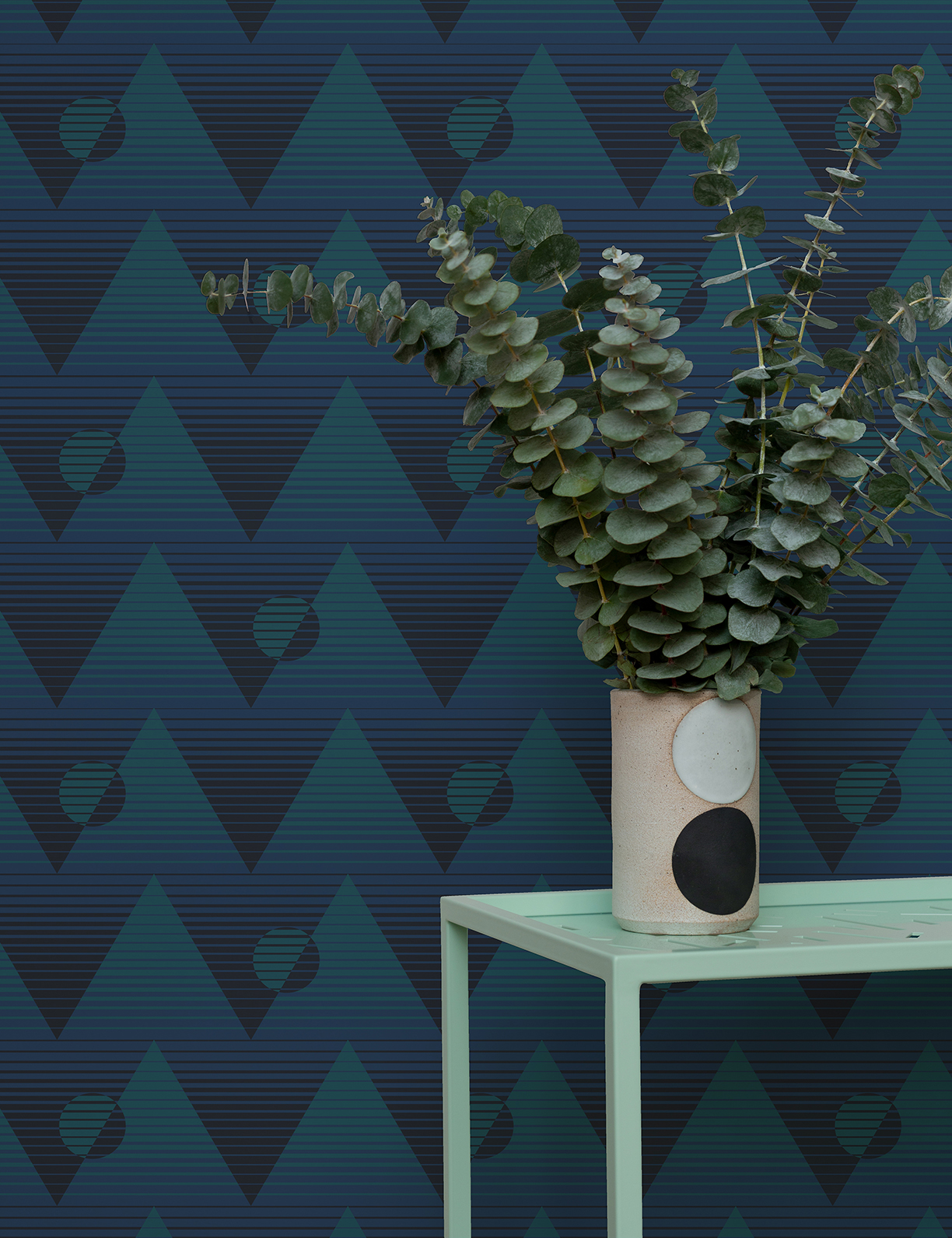
Pyramide du Soleil
Photos courtesy Aimee Wilder.

Eclipse
Photo by ©Dylan Chandler 2018.
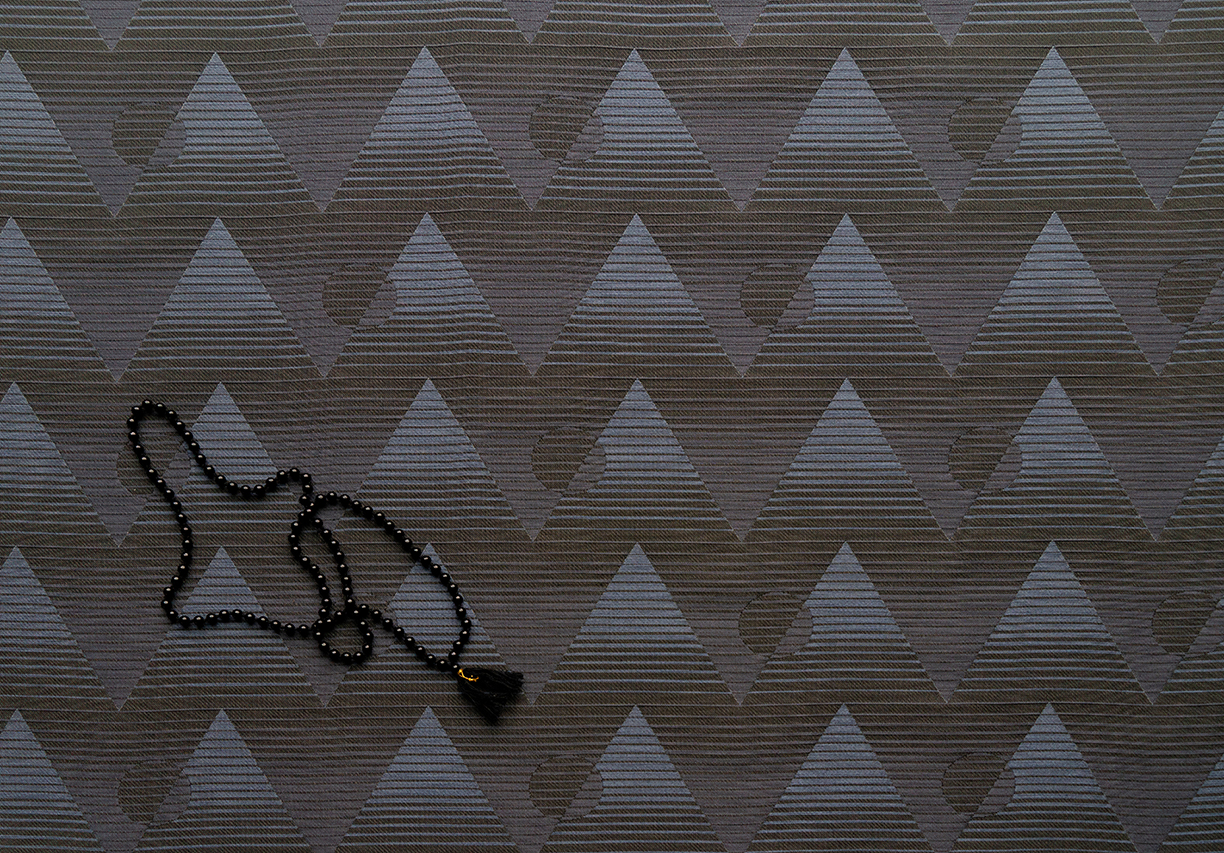
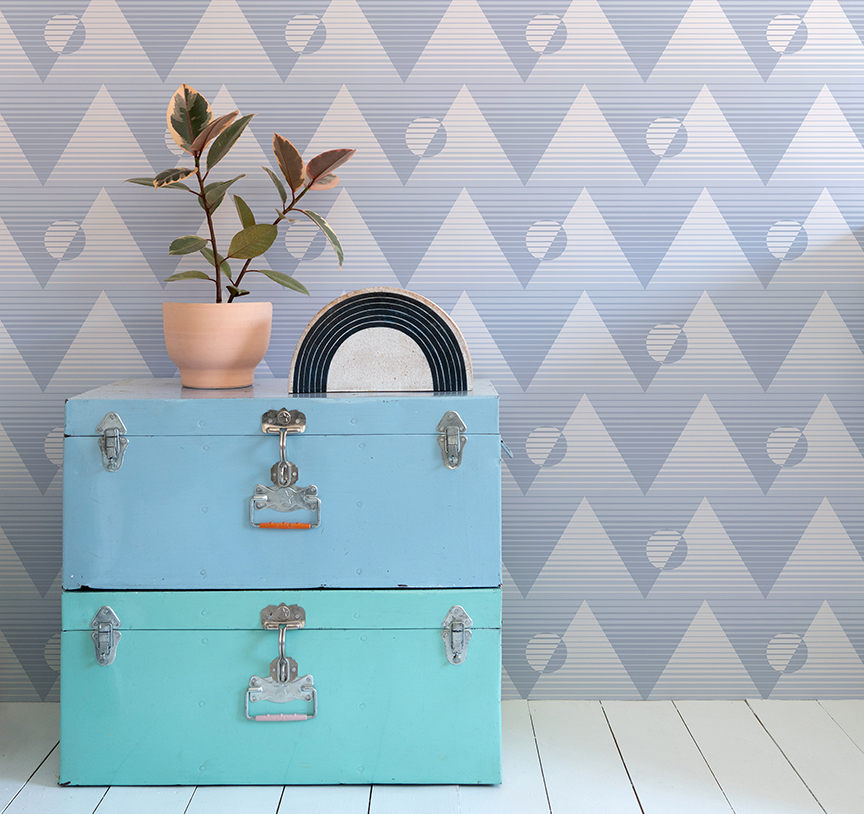
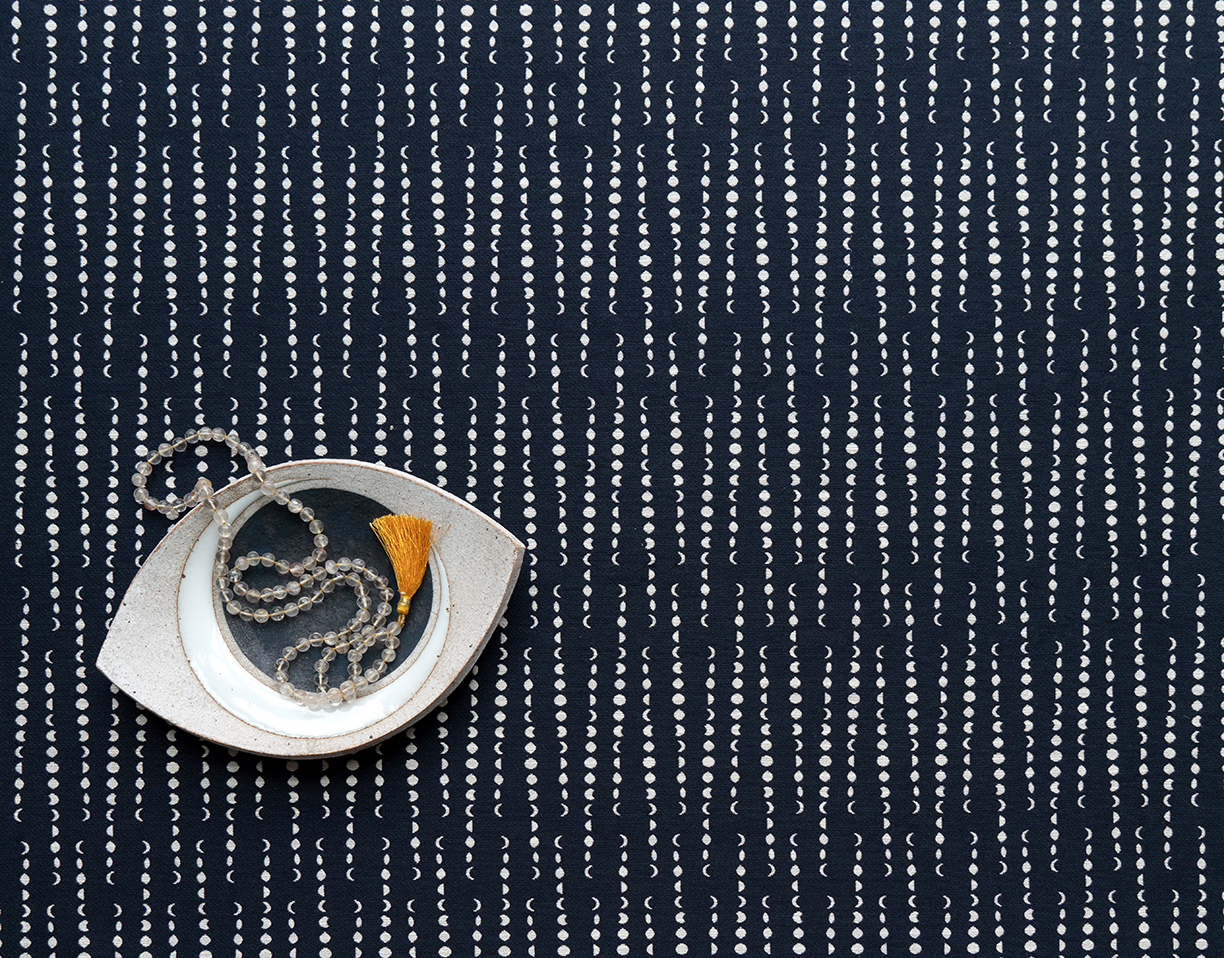
Earthlight
Photos courtesy Aimee Wilder.
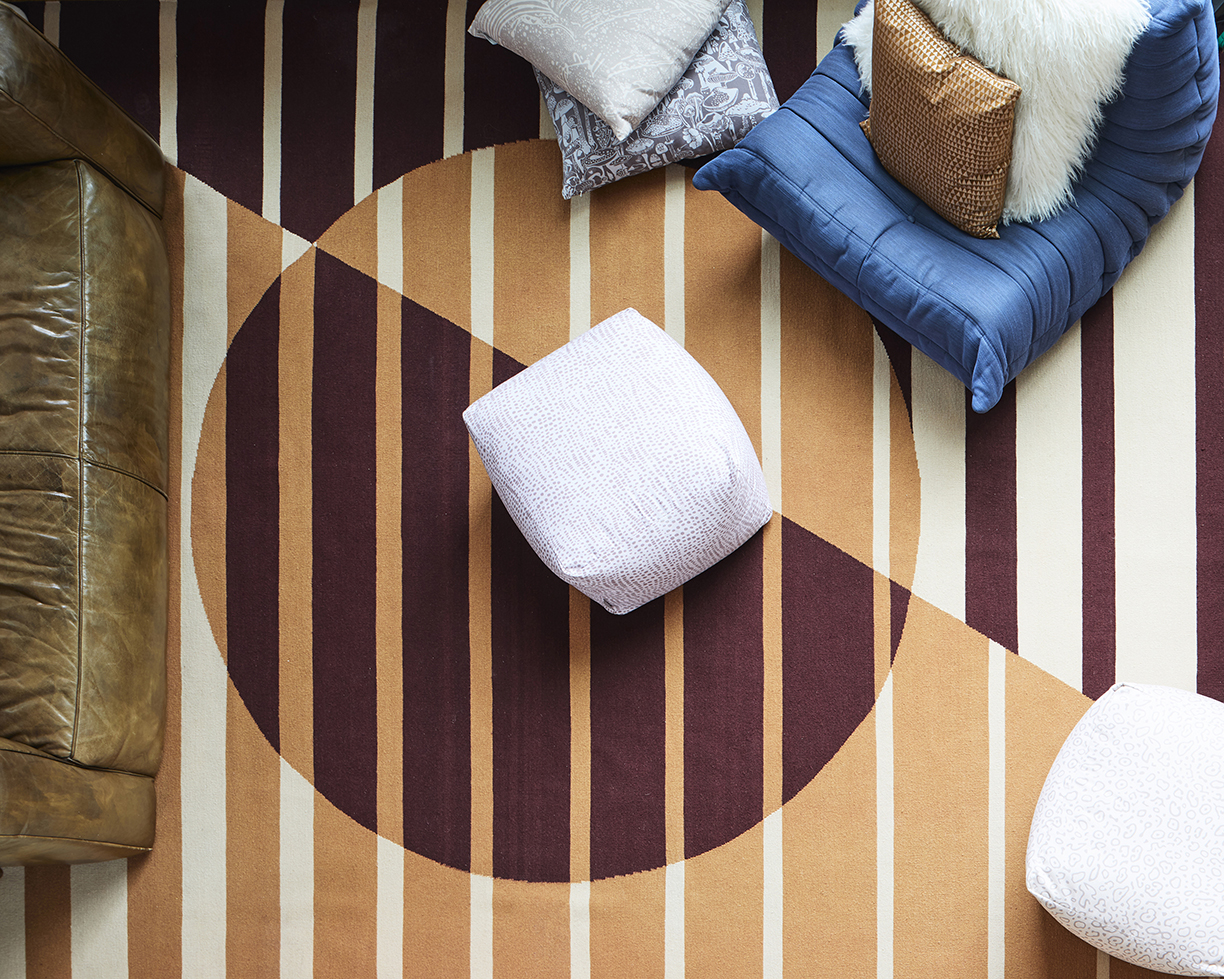
As we enter 2019, here are four interior design trends to watch, according to today’s top interior designers as told through Ketra.
Technology Brings Another Dimension
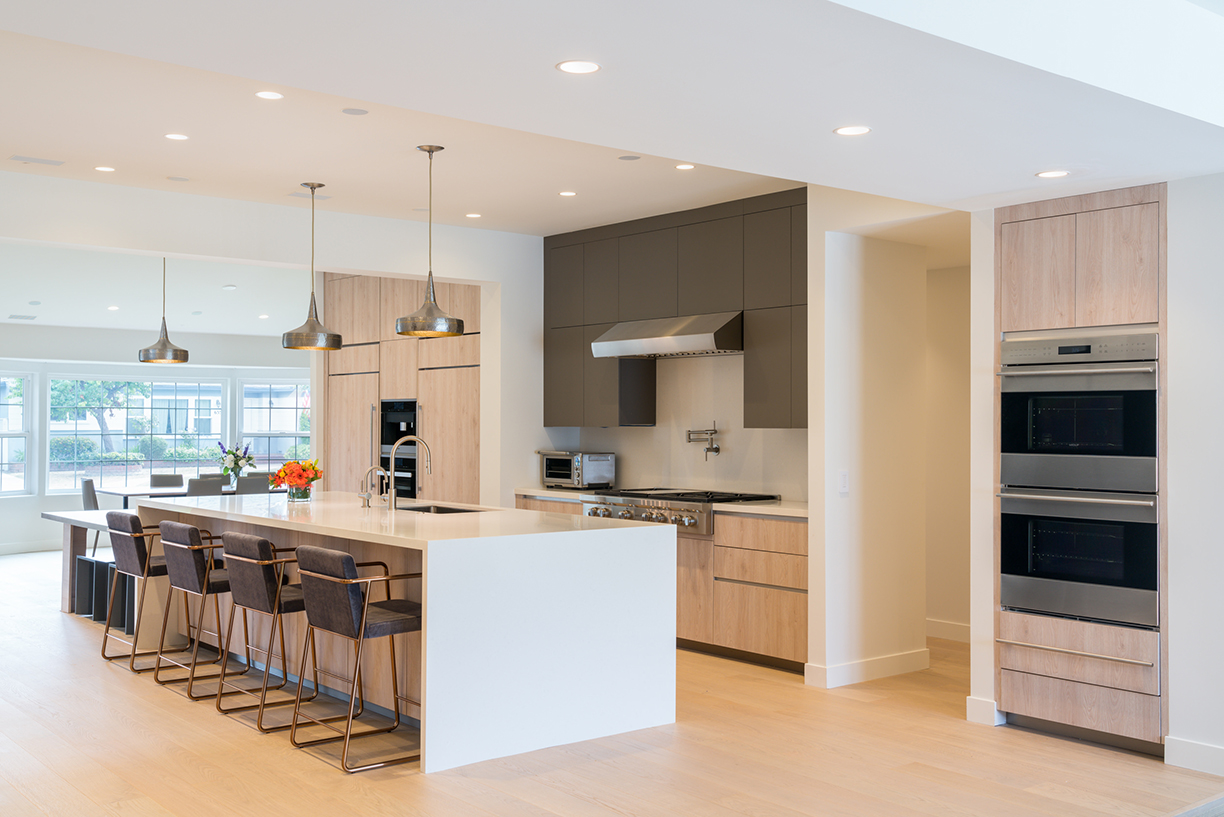
photo by Ketra
In 2019, smart home technology will be a must — whether it’s remote lighting control, window shades built for energy savings, or full-home voice automation.
“One of the major advantages to tech and connectivity in the home is the ability to manage the property remotely, with doorbells now doubling as security cameras, wireless thermostats that can be preset or adjusted while away, or programmable lighting and window shades for energy savings and to make it appear that people are in the home,” explains Erin Ruby, founder of Erin Ruby Design, LLC.
“Technology always has something new that peaks a client’s interest,” adds Rendell Fernandez, design director at Pembrooke & Ives. “Voice actuated smart speakers now add another layer of home automation controls that were non-existent just a few months ago.”
Investments in Meaningful Furnishings
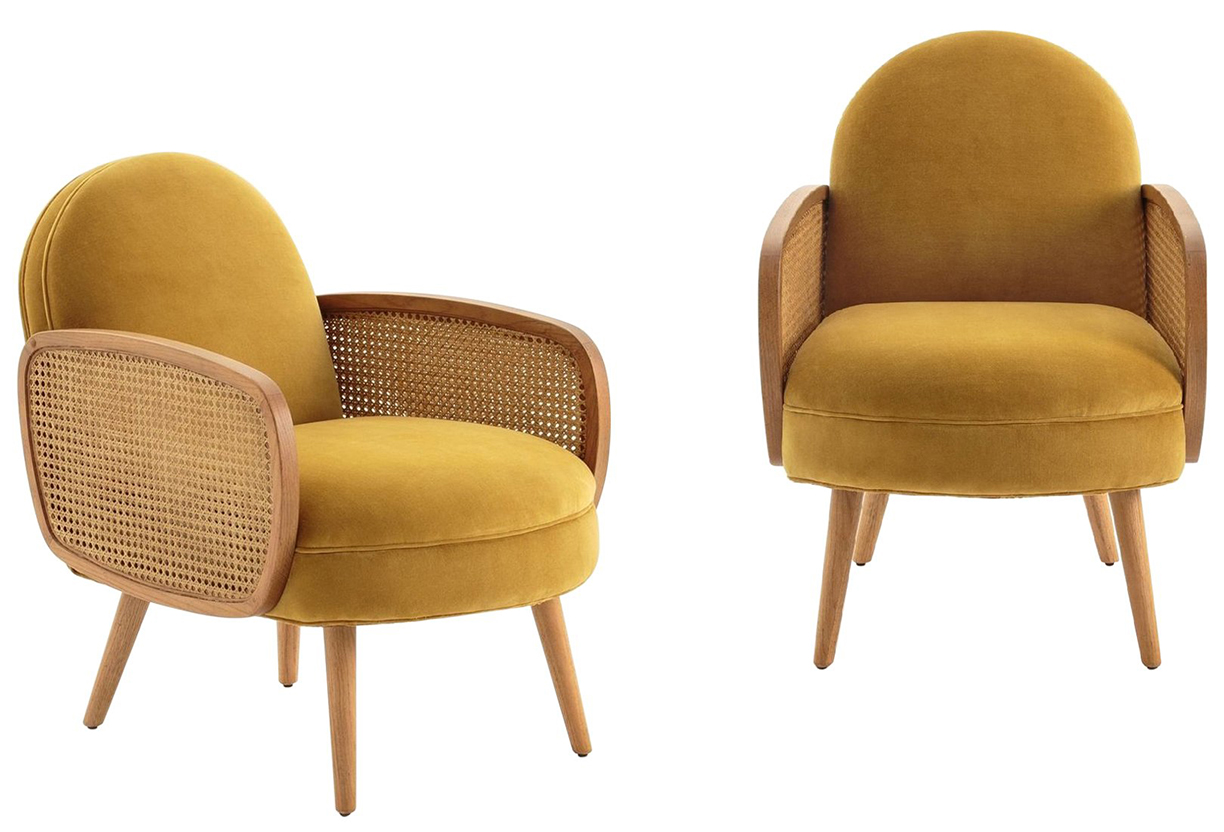
In 2019, there will be a greater value in selecting quality products. “In response to the culture of fast furniture and disposable pieces purchased solely for convenience, more and more manufacturers are offering quality products in reasonable lead times,” Ruby says.
“Even IKEA is making fine crafted products now! Businesses are seeing the value of investing in meaningful pieces, be it furniture, artwork, or lighting, to elevate the experience within their space and offer a more thoughtful representation of their culture and brand.”
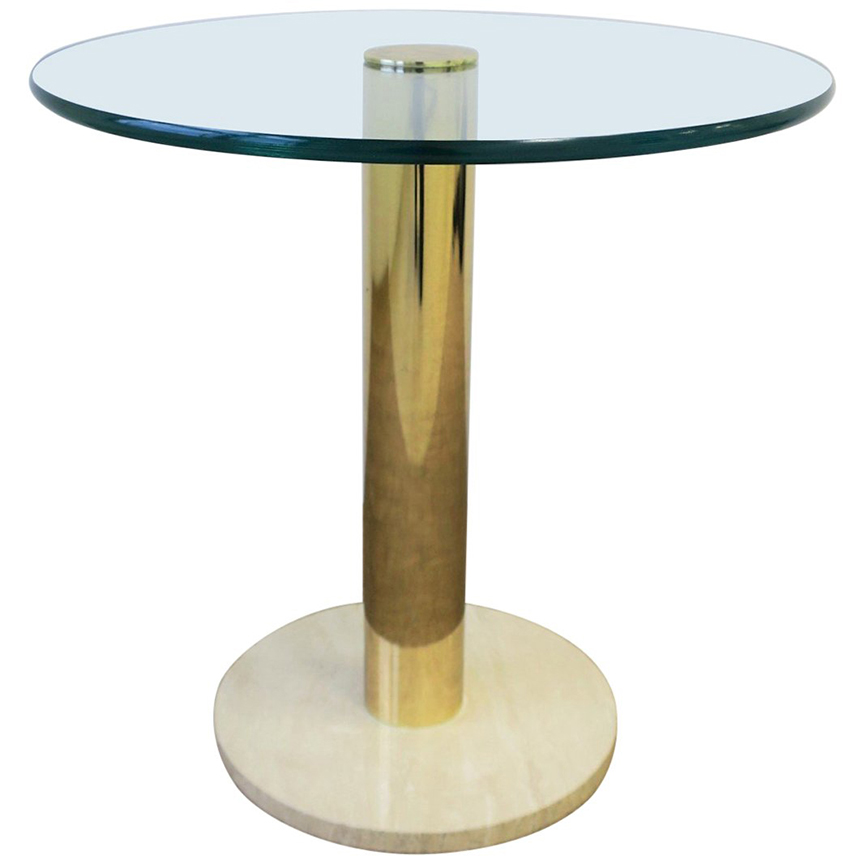
photos by 1stdibs
Neutral Hues are the Best Canvas
According to the team at Pavarini Design, 2019 will bring about neutrals grays and pale pastels that contrast early ’80s varieties of pale plums, pomegranates, and violets contrasting dark charcoals.
Benjamin Moore recently announced the Color of the Year 2019 — Metropolitan AF-690, a stylish gray with cool undertones, reinforcing that neutrals are in.
While most colors are driven by client preferences that illustrate the diversity of the full color spectrum, Fernandez agrees that the designers at Pembrooke & Ives stay true to neutral tones and natural finishes.
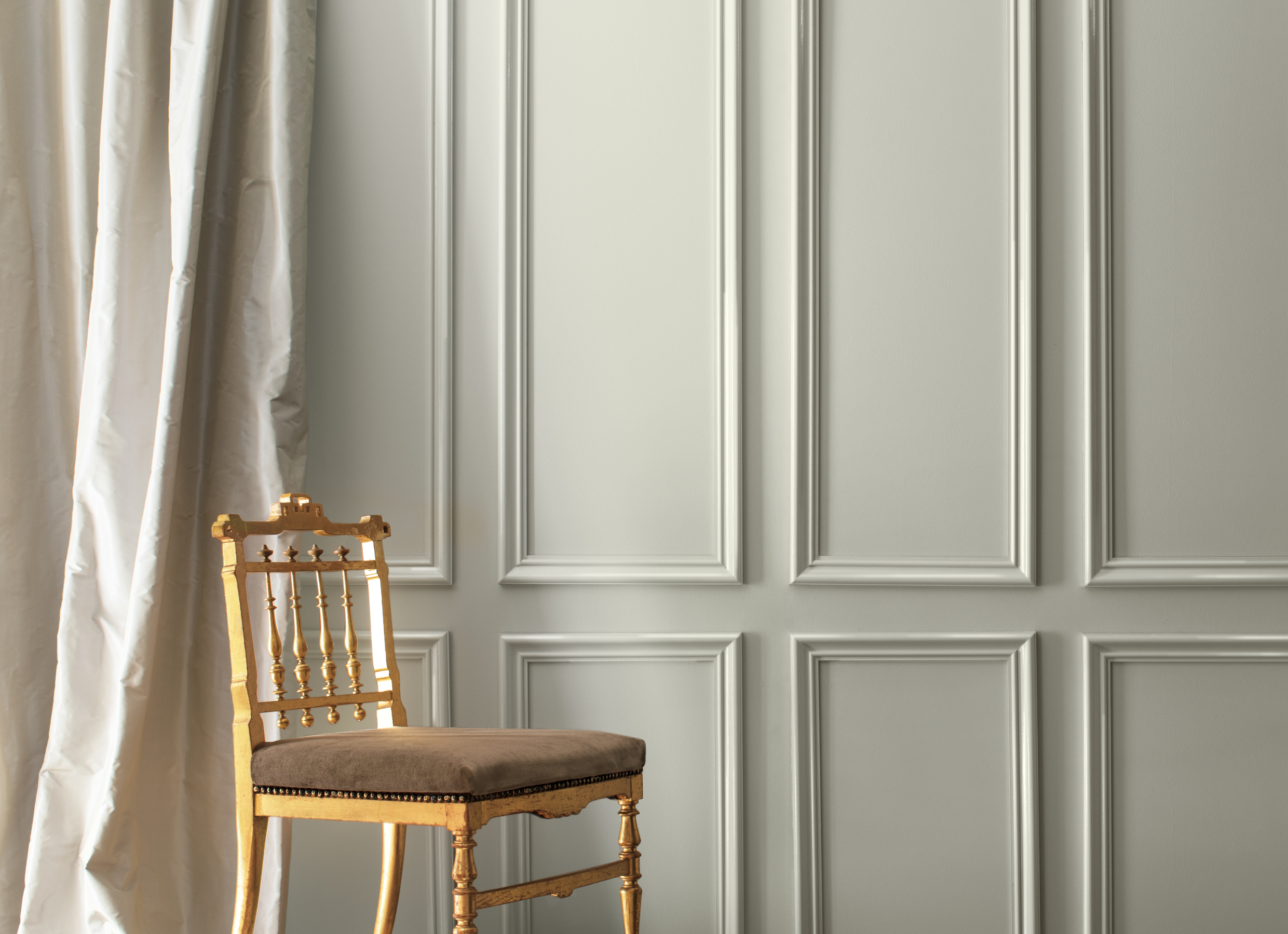
Photo by Benjamin Moore
Lights that Mimics of the Natural Spectrum of Sunlight
Natural light is a key element to think about when designing a space. “It’s our connection to nature and makes us feel good,” says Charles Pavarini III and J. Randall Tarasuk of Pavarini Design. “The ability to amplify the natural spectrum of light coming through your windows is something we have never had the ability to do before. It’s a breakthrough that is sure to find a growing market.”
“As the quality of lighting technology improves and evolves, this will continue to be an increasingly vital aspect of the built environment,” Ruby agrees. “Any space is only as good as it’s lighting. Lighting dictates how spaces are perceived — warm and inviting, or cold and stark.”

photo by Ketra
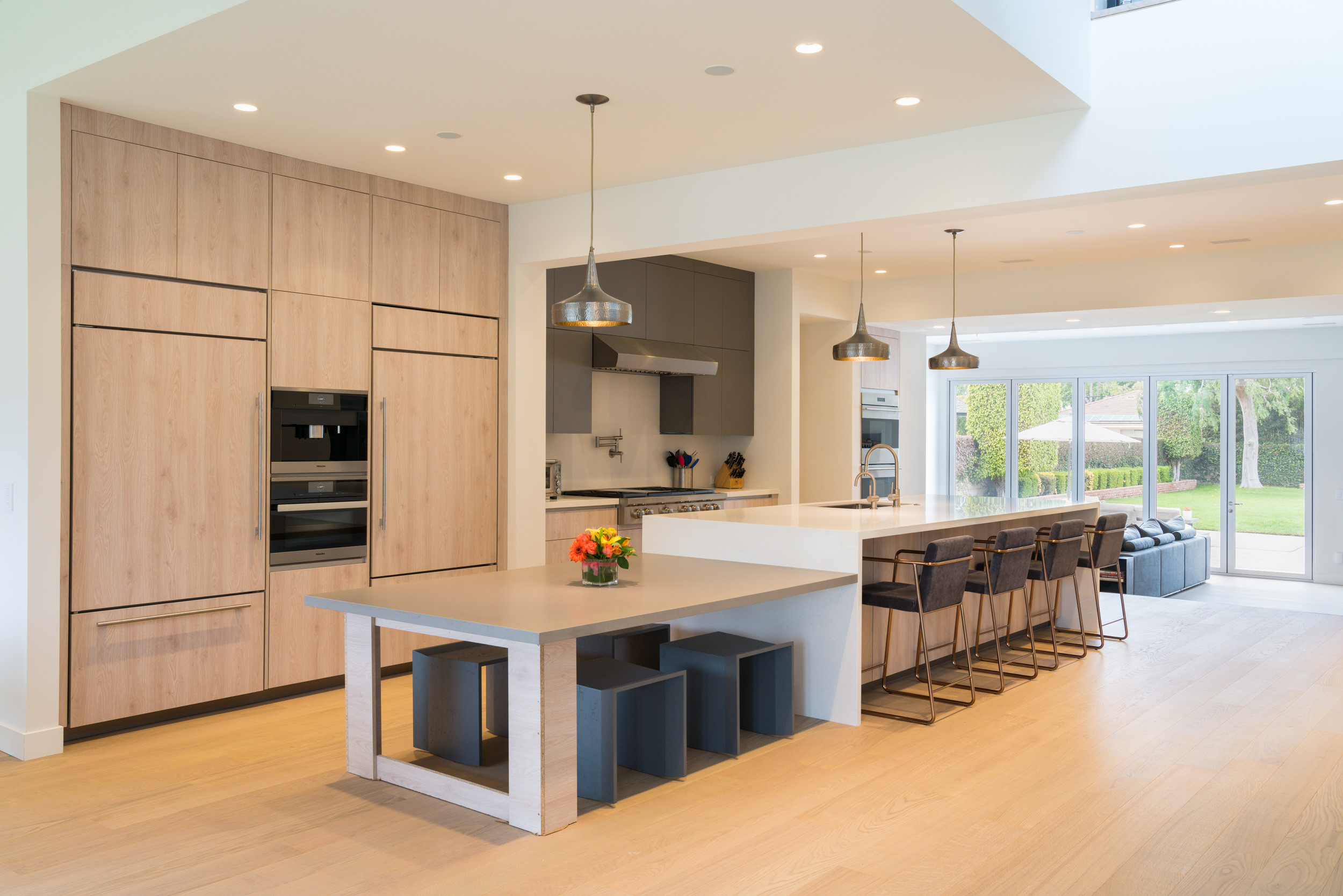
photo by Ketra
Due to their gleaming iridescent luster and milky white tones, White Quartz are often used in home design projects by interior designers.
As one of the most abundant stones in the world, White Quartz is often used in its most utilitarian form, serving as base material to build countertops or other solid surfaces. But consider and examine White Quartz crystals in their most authentic, raw formations when extracted from the earth: the variety of shapes and sizes from single to multi-point configurations and their gleaming iridescent luster, White Quartz displays an exquisite style and broad appeal to any interior space.
White Quartz’s universal look proves it works well in a busy maximalist setting or on its own in a minimalist aesthetic. Displaying this high-quality crystal in a foyer or entrance will deliver an unexpected but alluring presence, to be admired as nature’s grand work of art. Position smaller tabletop versions of the crystal on a dining room table or display it as a pièce de résistance centerpiece in any room to command attention. White Quartz’s intrinsic sculptural and natural qualities add a touch of glamour to every space it occupies. |
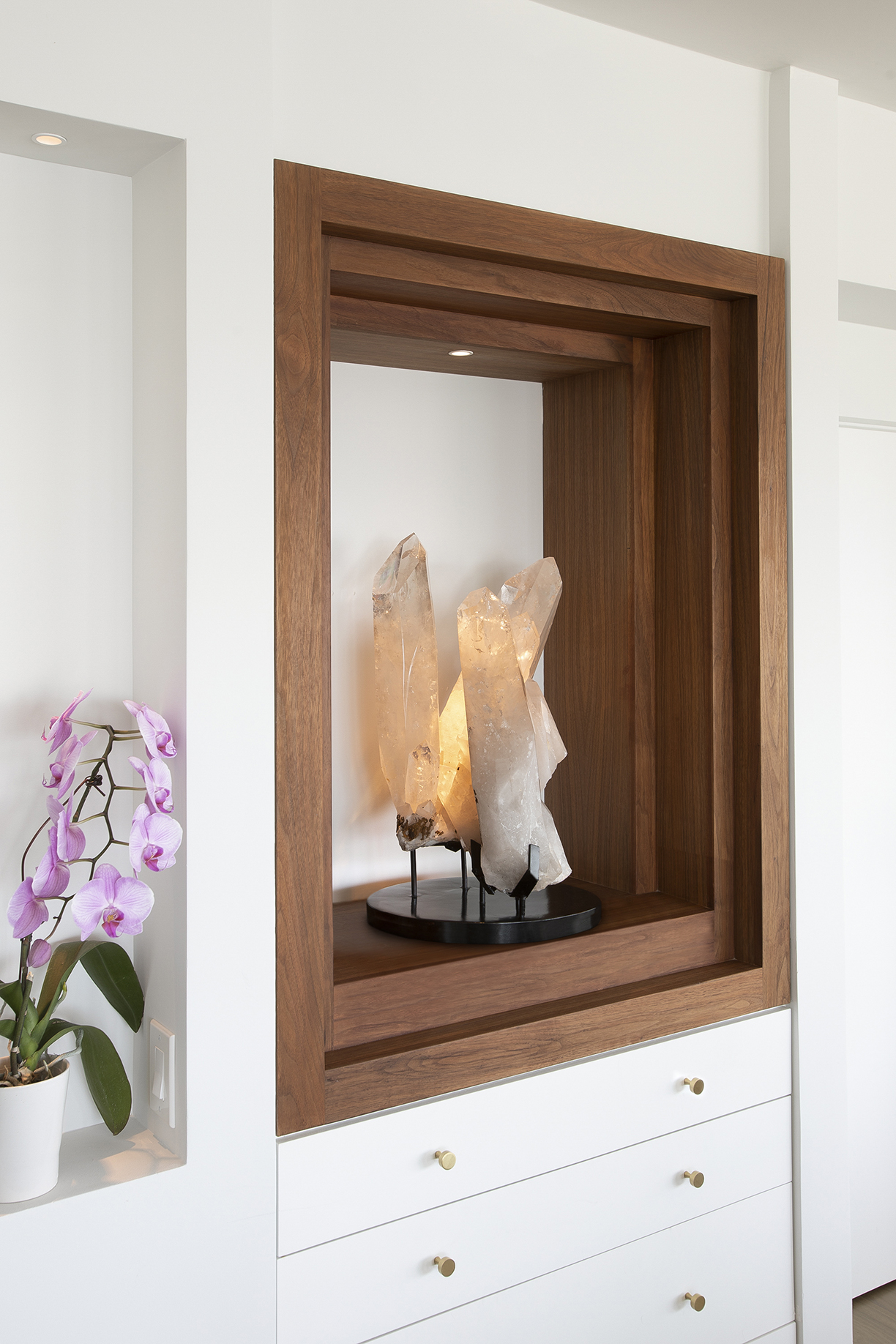
| Based in Venice, California, Mystic Journey Crystals is recognized globally as the purveyor for extraordinary, investment-quality crystals and geodes for residential, commercial and hospitality spaces.
Founder Jeffery Segal established the company in 2008 with the opening of Mystic Journey Bookstore and the intent to spread his growing passion and appreciation of large, sculptural crystals and the metaphysical properties they possess to the community. |

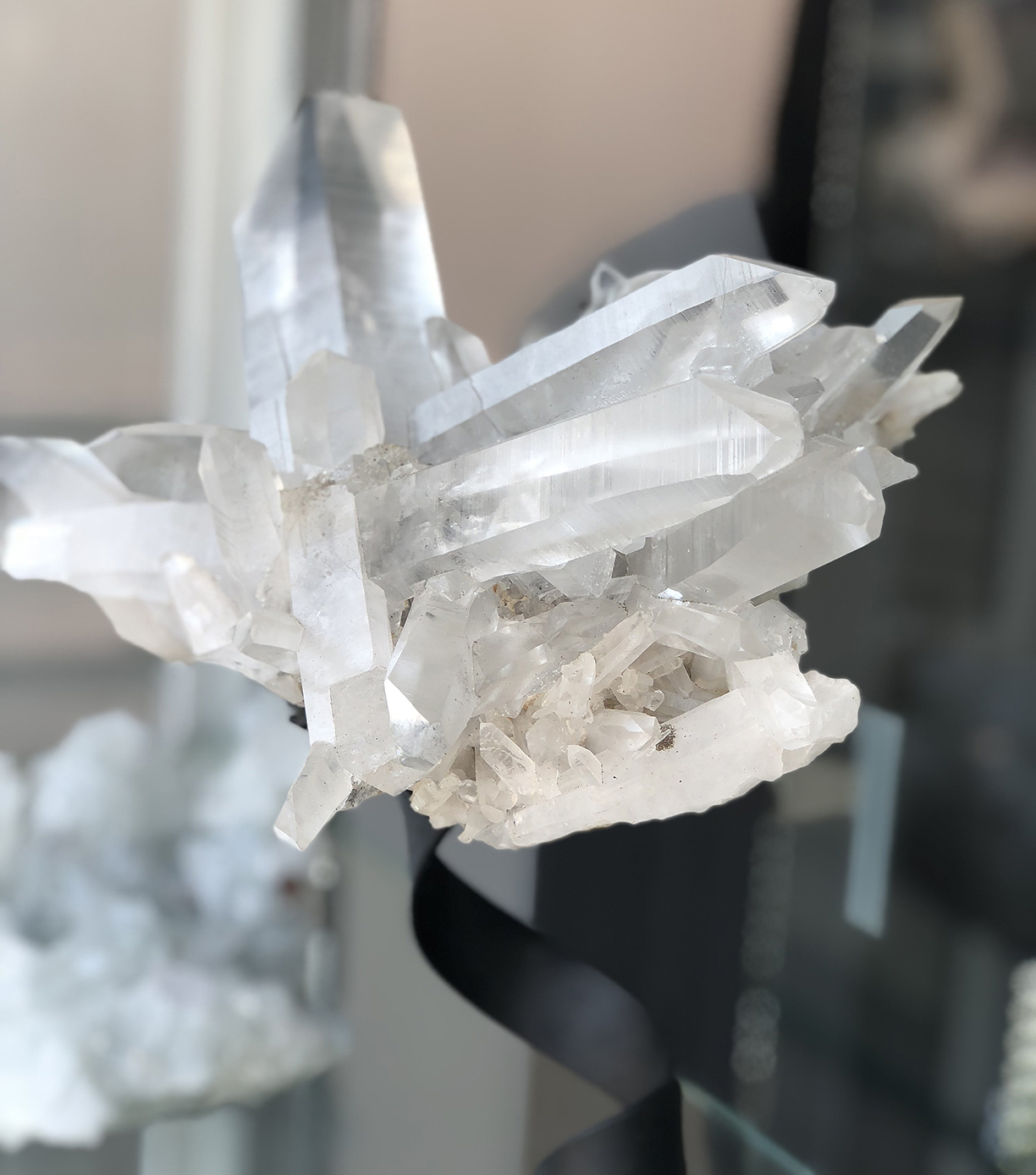
From screenwriter to actress and model, Meridith Baer never imagined becoming a businessperson, let alone the founder of a leading home staging company at age 50. Now, with offices in Los Angeles, New York, San Francisco and Miami, Meridith Baer Home has flourished into a lifestyle brand that does more than just increase a home’s value.
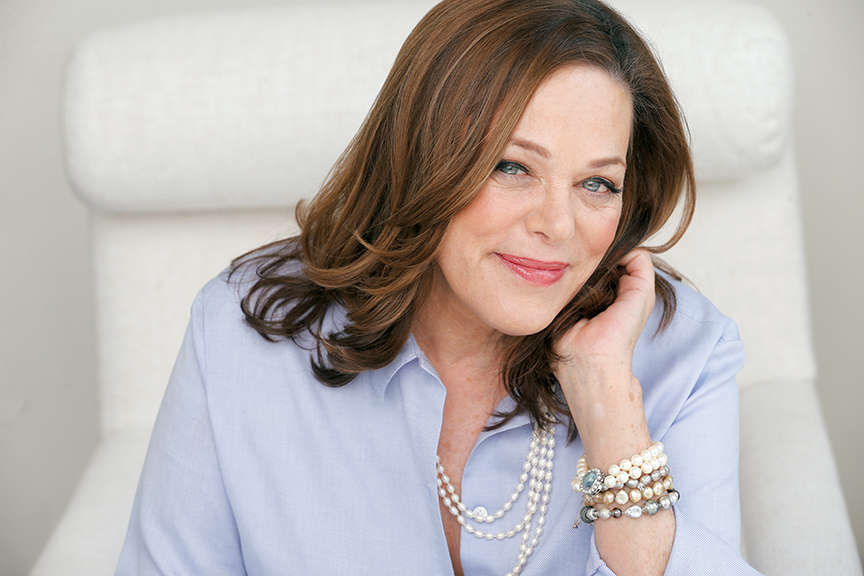
Photo courtesy of Meridith Baer Home.
What brought you to design?
As a kid I loved rearranging furniture and my mom let me. She bought and flipped mansions in the Midwest and she would take my advice on what to buy or how to arrange. My apartments always looked great with inexpensive finds and friends often asked me to help them pull their places together, which I did gladly.
How does design make you happy?
When I wrote scripts, it was hard to feel realized. So many people get their fingerprints all over what you’re doing and a project can go on for years and may still never get made … or not get made in a way I saw it. But I can stage a home in a matter of days and have a sense of satisfaction and fulfillment.
What is your favorite room or type of home to stage, if there is one, and why?
All homes present a unique challenge. Making older homes fresh and young is very satisfying. Personally, I love doing modern homes with a mix of styles, even throwing in a bit of neoclassical here and there.
Are there any activities outside of work that help inspire your work? Any that help you escape?
Travel is a great inspiration. I always come home with new ideas. I read every home magazine I can get my hands on. The only way I get away from work is Sudoku. It doesn’t inspire me, but it is all about bringing order … which, in part, is what design does.
What influence, if any, do you get from where you live?
Living in Los Angeles, I spent a lot of time outside and it is very important to me to bring the outside in and the inside out. Growing up, I spent a lot of time at the family ranch, so I like to include rustic elements in my designs.
Is there a specific style that you use when staging a home, or is it more particular to what the owner/seller has in mind?
What differentiates us from every other staging company is that we do enjoy doing all styles and have the inventory to do it. Before we begin, it is important that we get a clear understanding of what the broker and homeowner want, as we want to accommodate their ideas.
What is the most important element to remember to keep in any space you stage?
Everything has to look natural, easy and comfortable. Our job is to show the lifestyle one can have when they buy this home.
What colors, styles, and/or themes do you like to play with the most? The least?
I like backgrounds that are white or black … then I bring in color with rugs, art and accessories. I hate when a room has only one look … like everything came from one showroom. However I like groupings of objects … either the same color, but different sizes or shapes, or a small collection arranged in an interesting way, or a single simple item. I like to tell stories with things.
Do you tend to “bring work home with you?”
I’ll ignore my home for a month or two, just live in it, then I’ll be walking by the living room, take it in with a long look, and start rearranging. Furnishings don’t need to be permanent.
What kind of design trends do you want to see in the future?
Interior design, like fashion, is always changing. For a number of years now modern has been trending. Unfortunately it has gotten fairly cookie cutter. So I would like to see more of a mix in homes … modern mixed with different periods and sensibilities.
Any projects you’re working on now, or any in mind for the future?
We’re always coming up with new designs and have begun manufacturing much of our furniture. We’re also in talks about a new television series about e-commerce and hotel design.
What advice would you give to someone going into interior design or starting his or her own firm?
Go for it!
This soothing master bedroom suite highlights striking water views with a cool, relaxing color palette and clean, transitional furnishings.
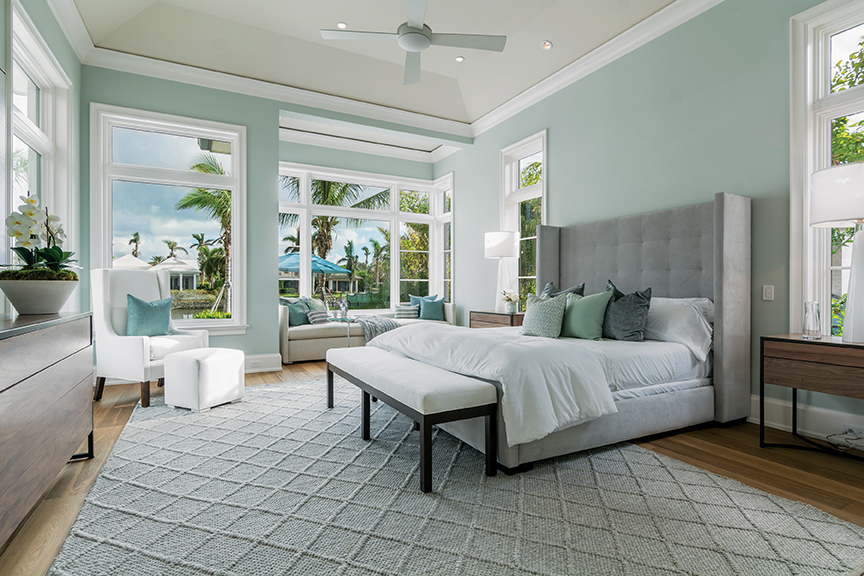
Photo by Wanderlust Photography, thewanderlustphotography.com.
Comfortable upholstered lounge seating brings the indoors outside, complementing the infinity pool.
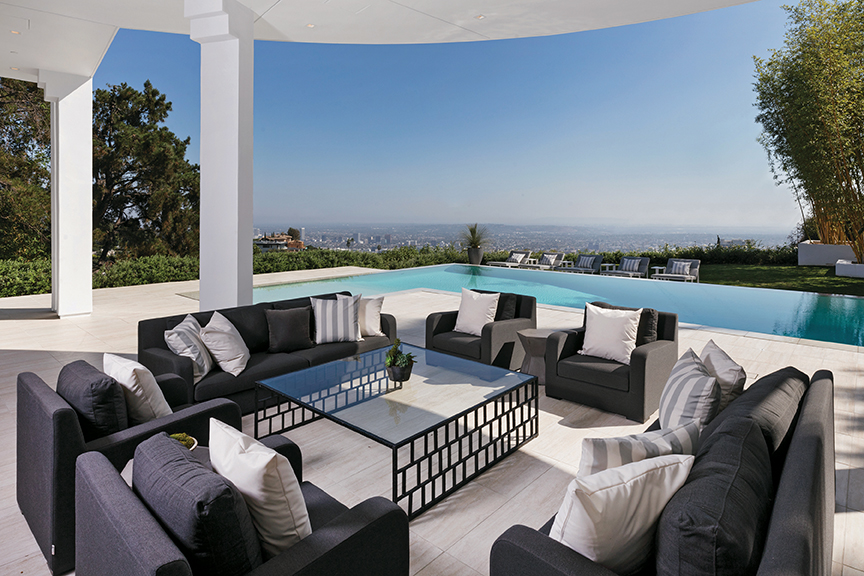
Photograph by Simon Berlyn, berlyn.net
An inviting step-down library features a muted palette and sophisticated textures.
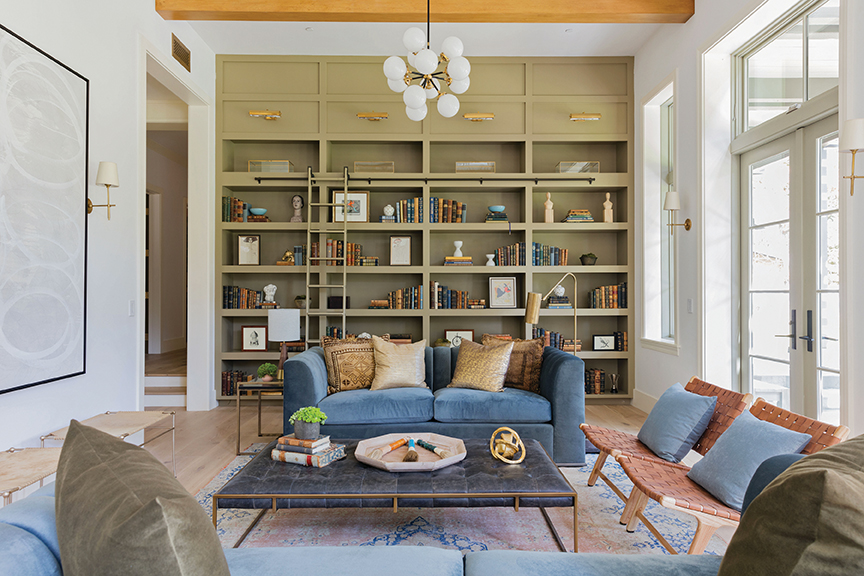
Photo by Rebecca Duke, instagram.com/rebeccamduke
This modern, double-height living area with elegant contemporary furnishings opens out to an inviting patio featuring a stunning pool and cabana.
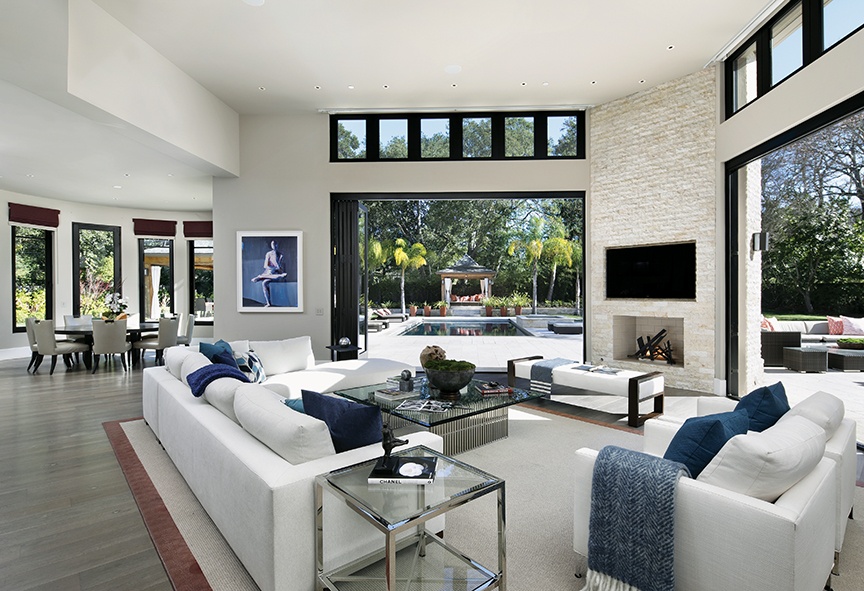
Photograph by Bernard André, bernardandre.com
The design of Lux* Grand Gaube incorporates elements of nature with its sea views, airy verandas and sundecks.
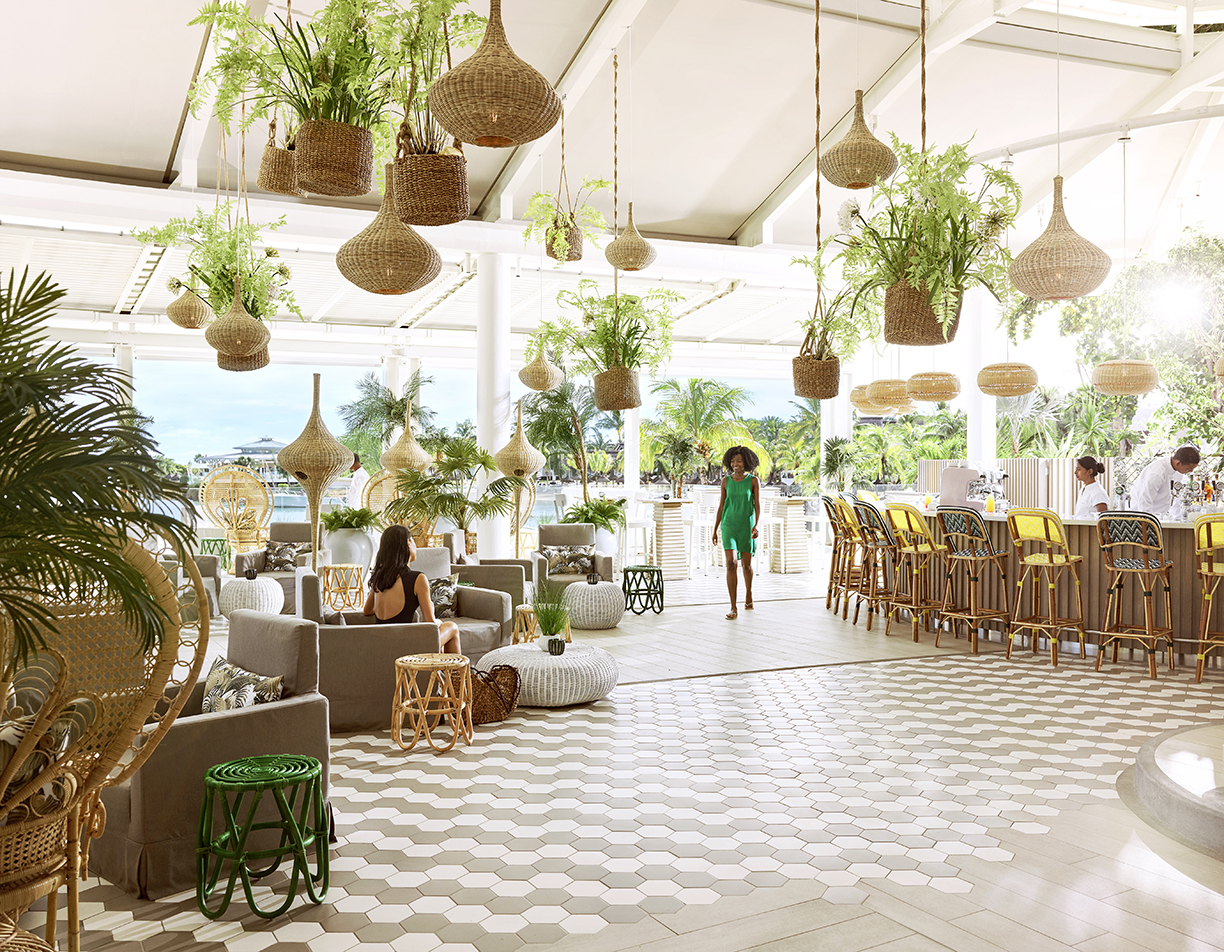
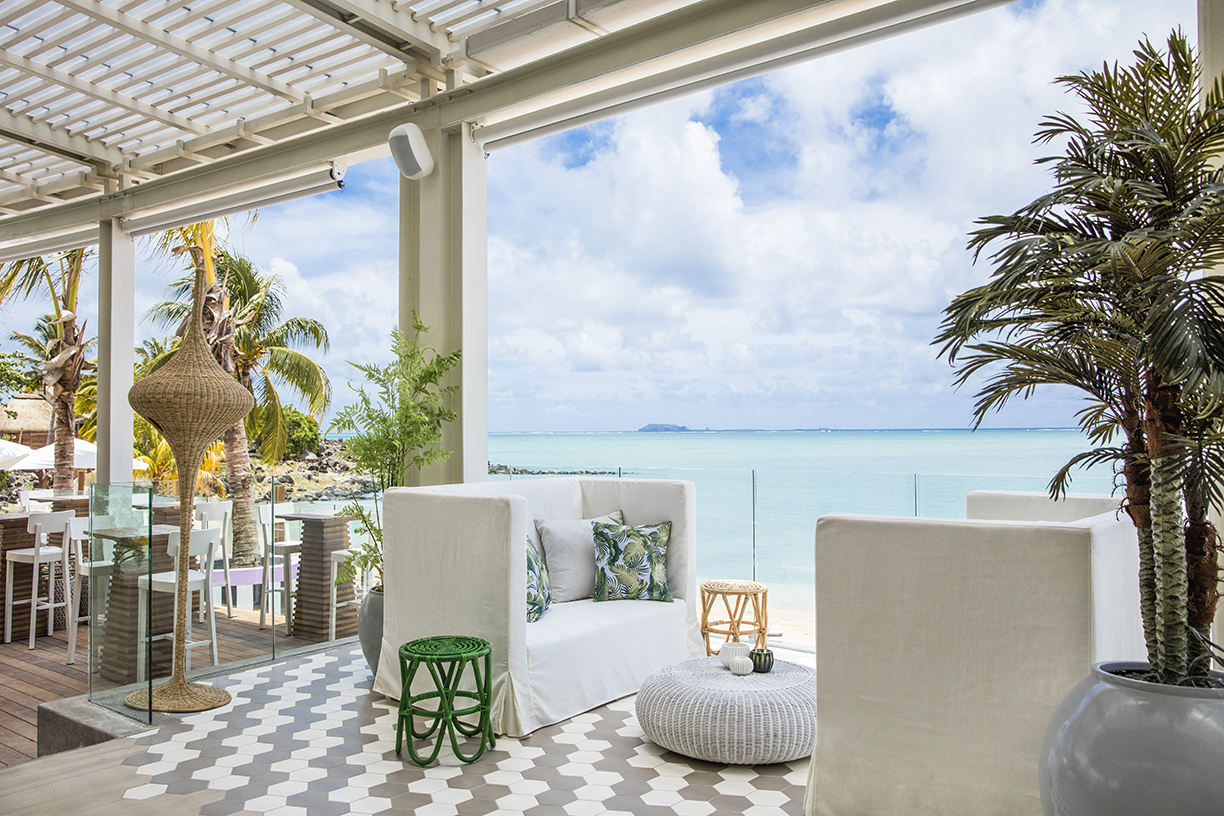
Kelly Hoppen, a designer, entrepreneur, author, educator and Member of the Order of the British Empire, has designed the interior of LUX* Grand Gaube, a major hotel owned by LUX* Resorts & Hotels. LUX* Grand Gaube is based in Mauritius, an island nation located in East Africa, that is known for its beaches, lagoons and reefs.
Reminded of her experiences in Africa as a child, Hoppen was blown away by the hotel’s location, light, smell and foliage. Hoppen wanted to provide an experience through her design for LUX* Grand Gaube and create something new for the brand.
“An experience is the strongest feeling to have and if I can create something special and have an amazing company like LUX* implement the service with my design then that’s when magic happens,” Hoppen said. “Both my brand and LUX* have a great understanding of what timeless luxury is and therefore the collaboration is a naturally evolving journey.”
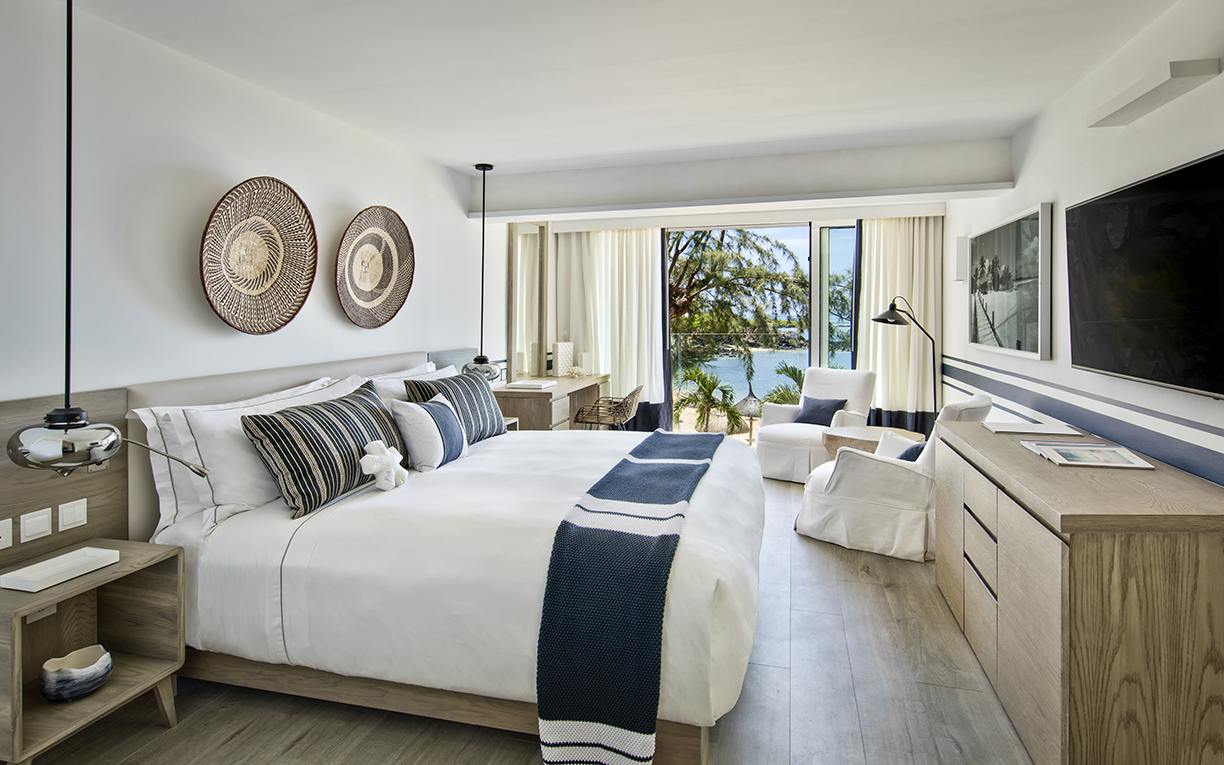
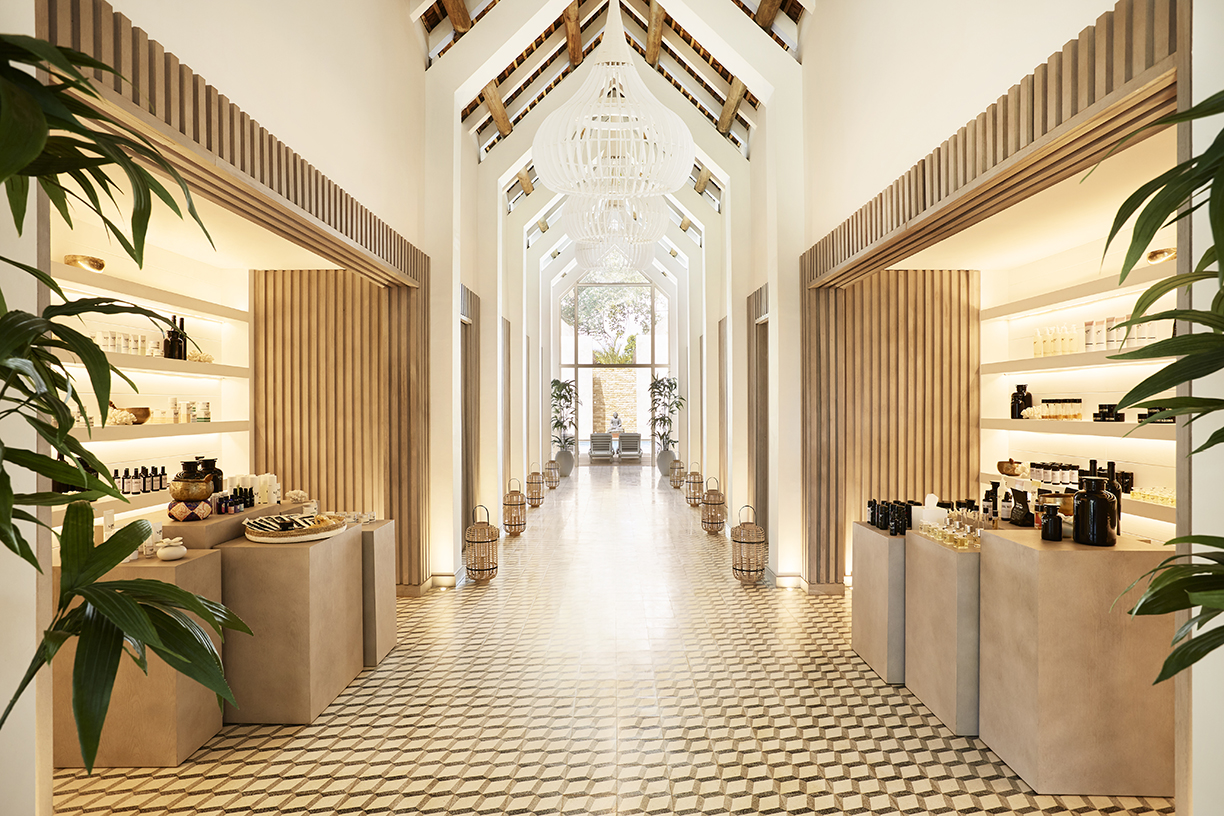
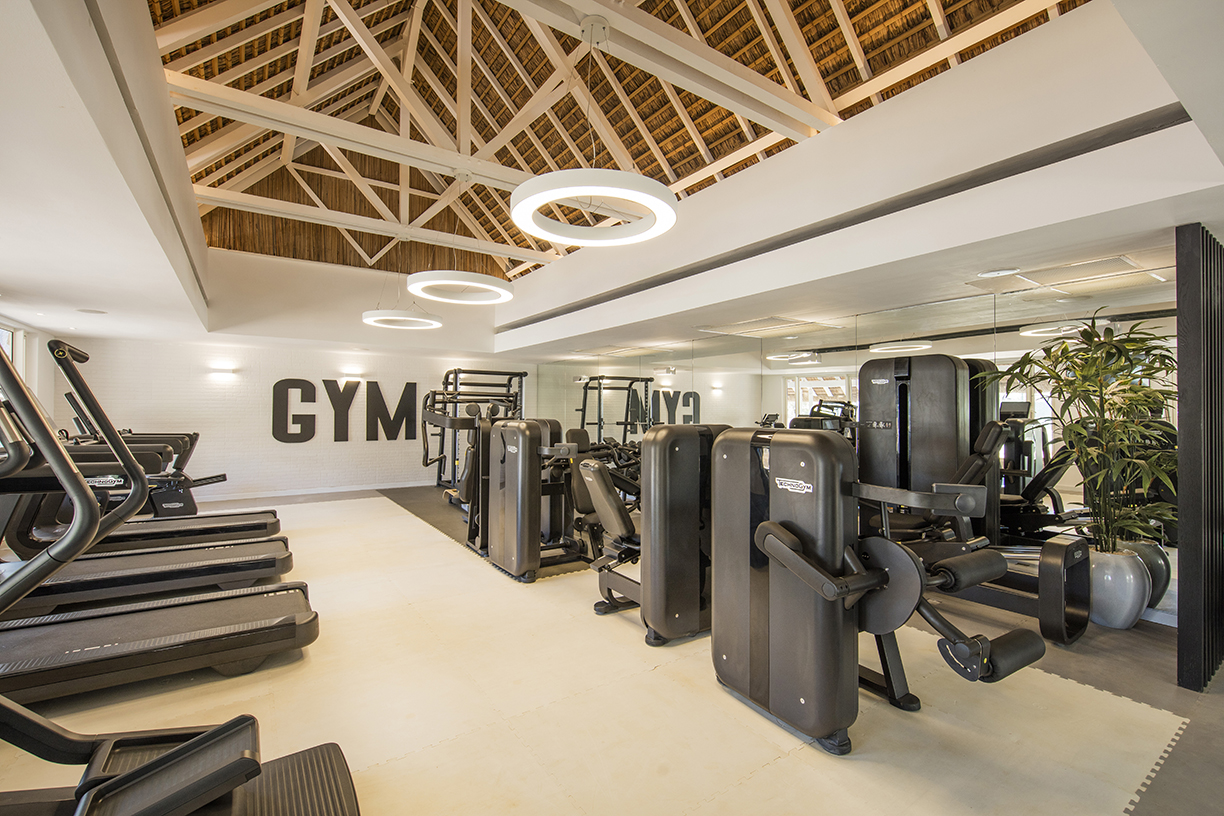
Hoppen’s design allows guests to feel at home and transports them to an extraordinary world which stays true to the architect Jean-Francois Adam’s vision of contemporary yet timeless Indian Ocean living.
As an avid traveller, Hoppen appreciates the importance of comfort and ease of a hotel, and when designing, puts herself in the guests’ shoes. For Hoppen, every single detail is extremely important. From the bedroom decor, to the restaurant, to the walk from the hotel to the beach, to having a sip of morning coffee — every aspect and angle had to be taken into consideration when designing this hotel.
For the hotel’s interior, Hoppen used her signature neutral pallet to create layers of contrast, both in color and texture. Hoppen complemented these neutrals with splashes of color for the interior spaces. Her design evokes a certain calmness throughout the resort and provides LUX* Grand Gaube with an essence of pure tranquility.
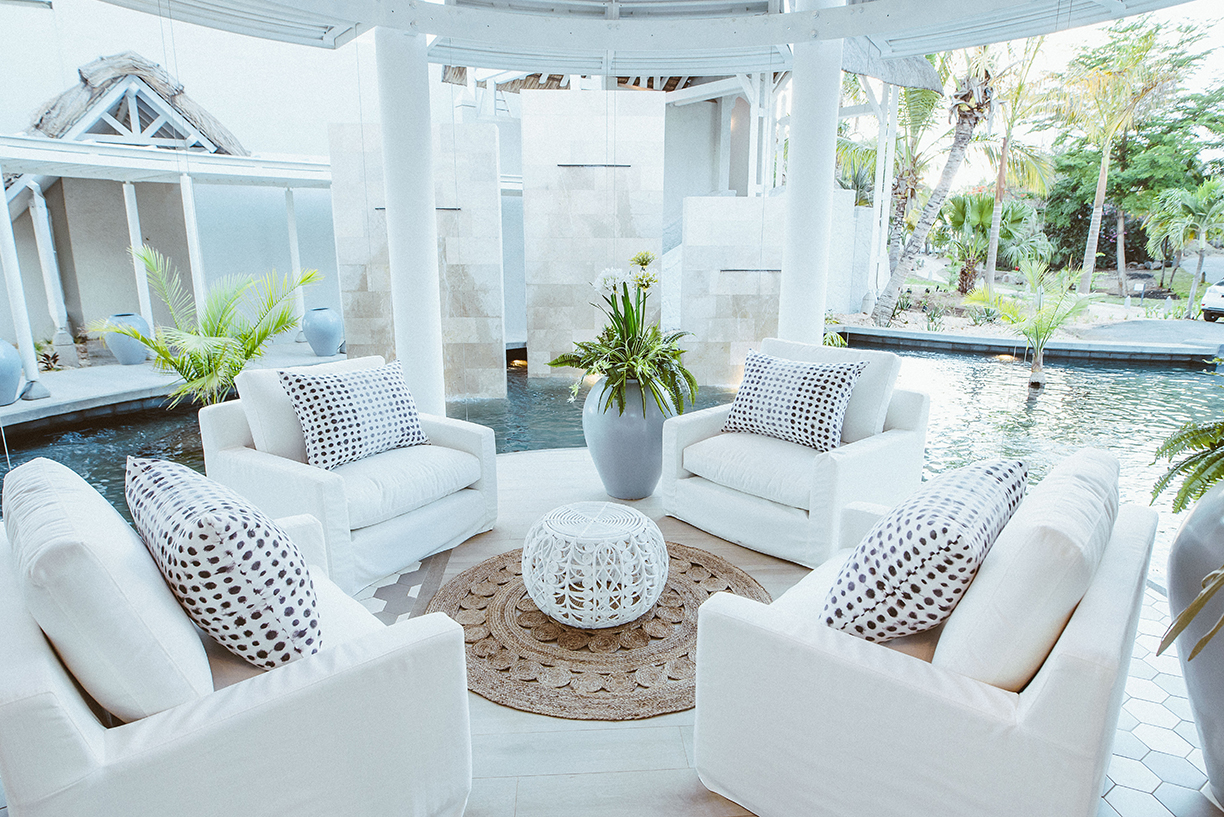
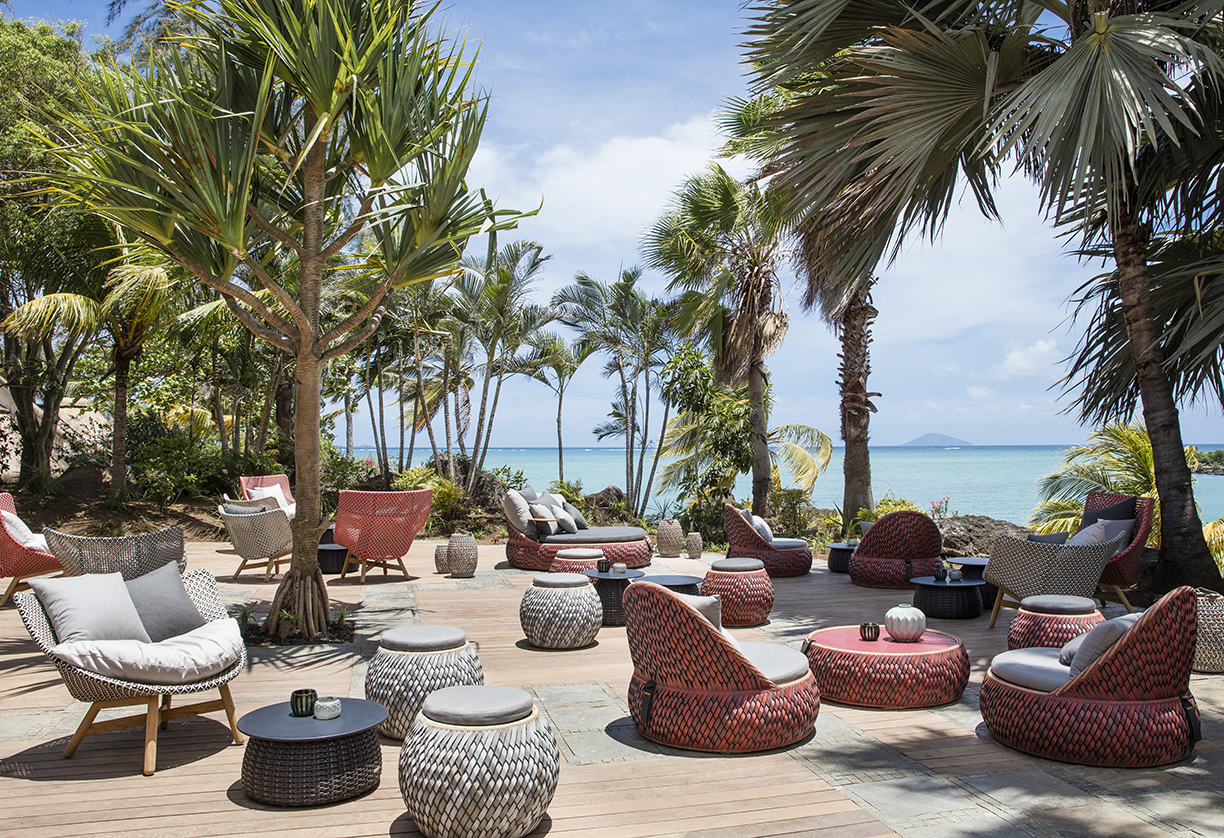
Inspired by the stunning natural landscape, Hoppen felt it was paramount to incorporate elements of nature in the interior spaces. All rooms, suites and villas open out to stunning sea views and airy verandas. Some rooms offer outdoor baths or sundecks edged by the resort’s private cove. Hoppen has enhanced the spindrift-white bedrooms with unexpected details such as succulents in ceramic pots. Accents such as handwoven African baskets, wicker tables and smooth neutral floors ensure all bedrooms provide the utmost comfort. The geometric encaustic tiles add graphic-design personality to the ensuites, and many bathrooms feature reclaimed bespoke Victorian bathtubs.
LUX* Grand Gaube provides its guests with a choice of six restaurants and seven bars, many of which are totally unique in style. Guests may enjoy sunshine or starlight through the glazed ceilings of the Palm Court Restaurant, while savouring dishes cooked à la minute. Every table in the restaurant looks out onto the ocean and guests may be seated comfortably on the banquettes or at the kitchen counters.
Inspired by the surrounding tropics, from the minute guests arrive to the minute they leave, Hoppen’s design allows guests to relax and forget about their troubles, immersing themselves in the resort’s experience.


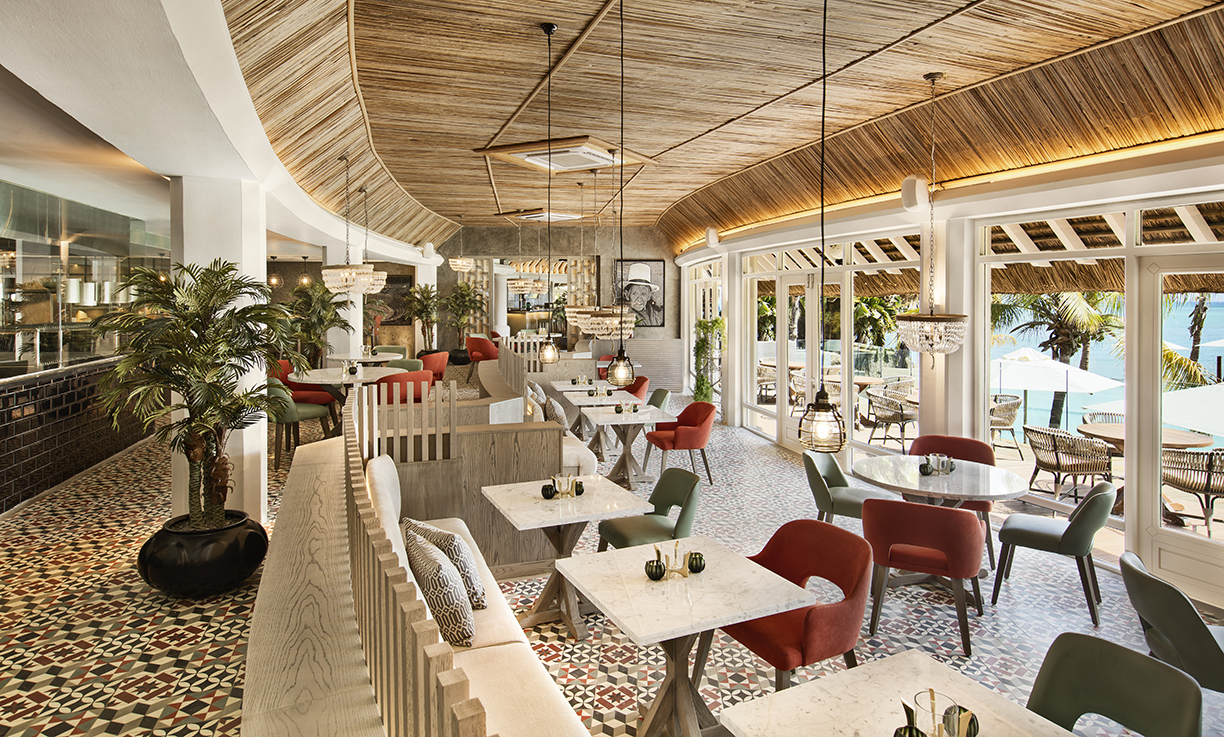
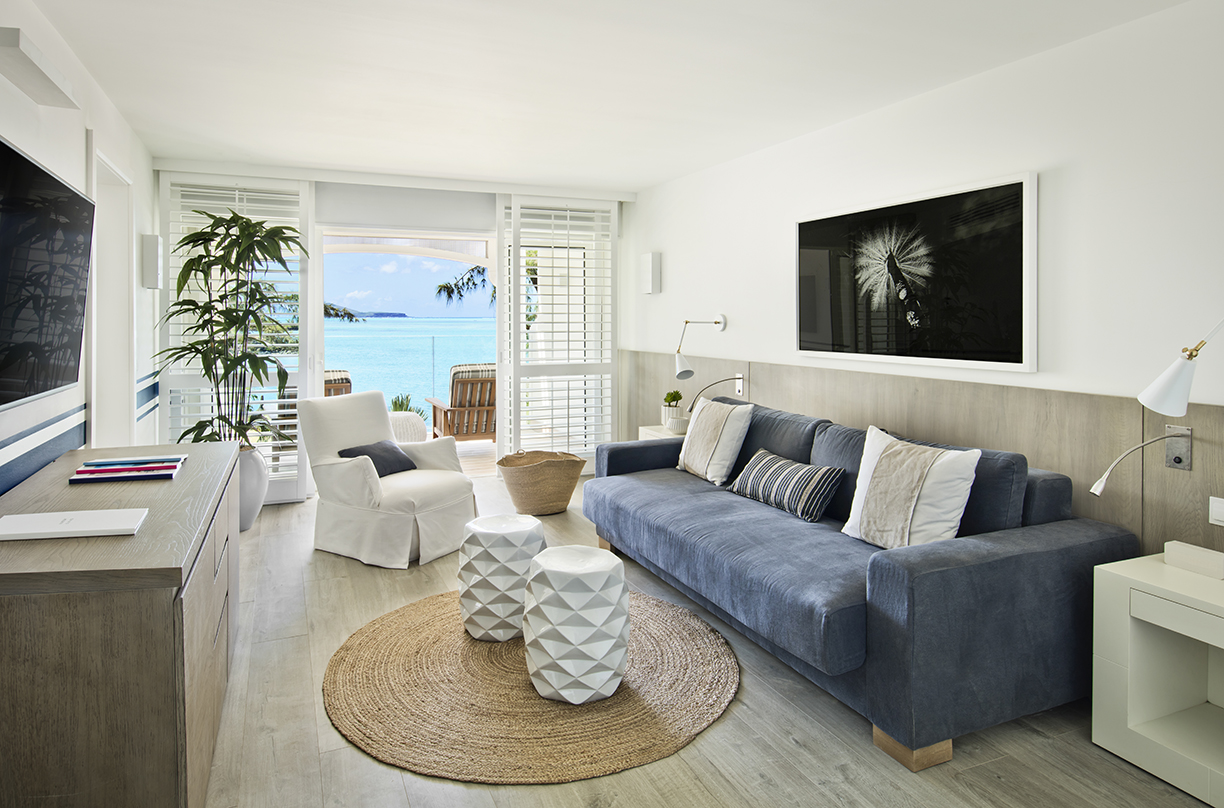
Photo courtesy of www.kellyhoppeninteriors.com











